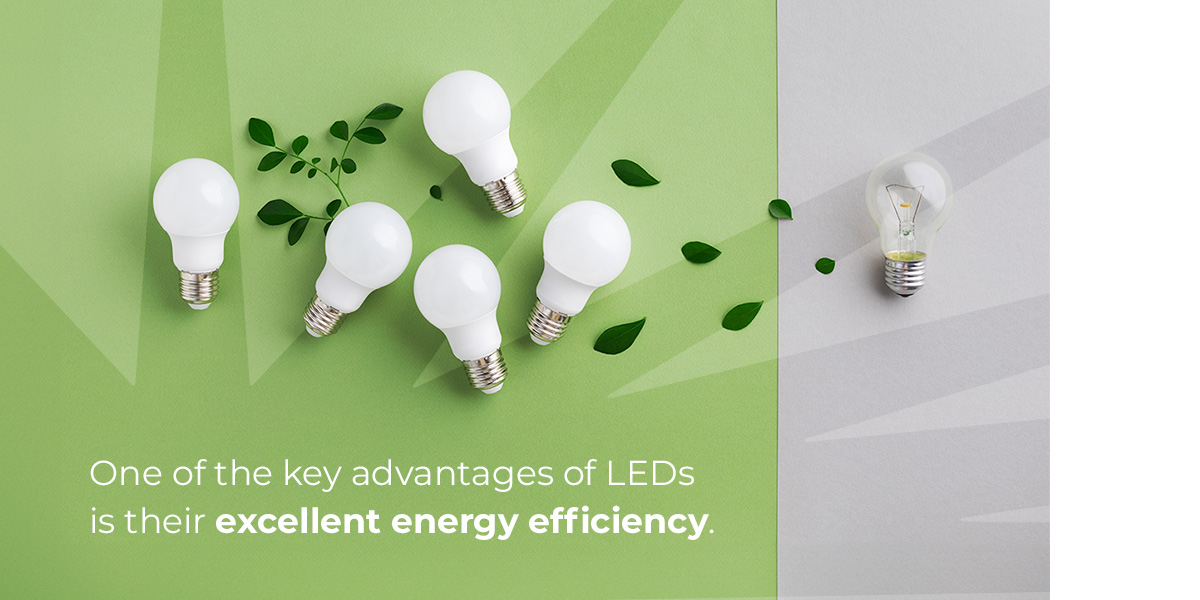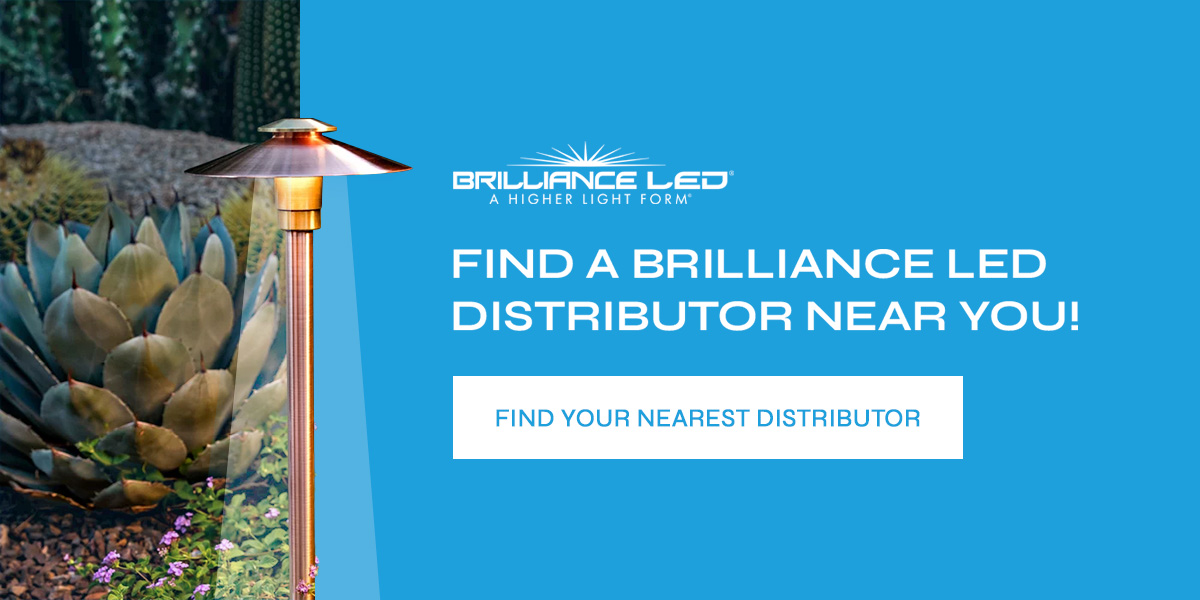When choosing landscape lighting solutions, two of the most common options today are incandescent and light-emitting diode (LED) bulbs. Both have distinctive features and advantages, so understanding how each one works can help you make the best decision when determining which to invest in for your business.
Below, we explore key differences between incandescent and LED lighting and why LEDs tend to outshine the competition.
What Is the Difference Between Incandescent and LED Lights?
For years, incandescent lights were extremely popular for commercial and residential uses. Over the last few decades, LED options have replaced many traditional bulbs, becoming the go-to pick for many indoor and outdoor applications, from Christmas lights to landscaping fixtures.
The main difference between these two bulb types is how they generate light. Incandescent bulbs operate by heating up a filament to a high temperature to produce light via thermal radiation. However, LED lights pass an electric current through a semiconductor material that excites electrons, releasing energy and generating light. Because of their unique designs, incandescent lights can grow quite warm, and LED lights produce far less heat during operation.
Energy efficiency is another key difference between the two lighting options. An LED bulb consumes less power to achieve the same number of lumens — or brightness — as an incandescent bulb.
To determine whether incandescent or LED lights are more compatible with your or your customers’ requirements, consider what specific advantages each offer.
What Are the Pros and Cons of Incandescent Lights?
Since incandescent lights have existed longer, we’ll start with their benefits and drawbacks. One pro of these options is their instant brightness. Users can expect immediate illumination when turning on one of these bulbs.
Incandescent lighting also tends to have lower upfront costs. Keep in mind LEDs are increasingly affordable, and their lower energy usage contributes to lower long-term expenses than traditional lights.
In fact, the primary con of incandescent options is their inefficiency — they require significantly more energy for illumination, contributing to a higher carbon footprint and higher greenhouse gas emissions. They can drive up utility costs, especially because these lights waste 90% of their energy on heat.
Their higher operating temperatures can also be a serious disadvantage. Users should not leave incandescent lights on for extended periods because they can become dangerously hot and be a potential fire hazard.
Incandescent bulbs tend to be delicate, and high temperatures can cause them to break. Because they typically feature a glass enclosure and filaments, they are more fragile and affected by vibration than most LED options. They also typically burn out more frequently than LED lights, contributing to even higher costs.
What Are the Pros and Cons of LED Lights?

Next, let’s look at LED lighting options and how they compare to traditional incandescent bulbs. One of the key advantages of LEDs is their excellent energy efficiency. While these lights may have slightly higher upfront costs, they will save users money in the long run. They consume far less power than incandescent lighting, which helps lower electricity bills and reduce carbon footprints. LEDs are also more efficient because they don’t waste electricity on generating heat.
Users who are interested in reducing their environmental impact can feel good about choosing LEDs. Another benefit of LED lights is their significantly longer life spans than incandescent bulbs, meaning they help reduce waste. Users can also spend less on frequent light replacements.
LEDs are durable, with a robust design that is more resistant to impact — they also perform well in cold and hot temperatures, making them an excellent choice for exterior applications.
Since these options do not generate as much heat as incandescent lamps, they are also widely considered a safer option because they remain cooler and are less likely to spark a fire during operation. LED bulbs can also have smart features, allowing users to leverage smart technology to control their lighting’s color, brightness and illumination schedule.
Incandescent vs. LED: Which Is Better?
When comparing LED and incandescent lighting, there is a clear winner. LED options are more energy-efficient, better for the planet and longer lasting. They produce less heat and are safer for users. If your business or customers are currently utilizing incandescent lights for landscaping applications, it’s time to make the switch.
For outdoor uses, LEDs are superior. While traditional incandescent lighting casts a wider glow, LEDs are more precise and right for highlighting landscape features with greater illumination for the most attractive results.
LED Landscaping Lights From Brilliance
At Brilliance LED, our landscaping lighting options offer a complete solution to take an outdoor space to the next level. We manufacture a wide range of LED lighting options and stylish fixtures that complement and elevate commercial and residential settings.
Our products are more durable than traditional lighting options, making them an excellent choice for outdoor applications. Our lights are bug-resistant because they are low voltage and don’t emit ultraviolet light. They are low-maintenance and cost-effective, helping businesses and homeowners reduce monthly utility bills.
The LED landscaping lights from Brilliance are designed to enhance outdoor safety, helping users brighten dark areas around their properties. They are perfect for illuminating pathways, steps and remote areas on the property to support better security.
LED Landscape Lighting Fixtures
Some of the most common fixtures for making outdoor spaces more inviting, secure and beautiful include:
- Floodlights: A top option for enhanced security and safety, floodlights are bright and have a wide angle to provide robust illumination on a property.
- Spotlights: These lights, also called uplights, can effectively highlight different features, including trees, shrubs or bushes, for an elevated look.
- Path lights: A path light offers brightness for a specific landscape area.
- Step lights: These lights provide illumination on outdoor steps to ensure safer navigation at night.
- String lights: String lights are decorative and playful fixtures that can make a landscaped area look special and inviting after dark.
- Bollard lights: Driveways and parking areas often utilize bollard lights for extra brightness.
- Fountain lights: A fountain light can add visual interest to swimming pools, ponds or other water fixtures.
Find a Brilliance LED Distributor Near You
At Brilliance LED, we pride ourselves on manufacturing high-quality, American-made LED lamps that are made to last. We prioritize purpose, durability and function in every design.
We have a variety of LED lighting solutions and landscaping fixtures available. Our team can help you navigate which options are best for your specific project or customers.
Find your nearest distributor to find top-quality fixtures and LED lamps to enhance any landscaping project. Interested in becoming a distributor? Fill out our online application today.


